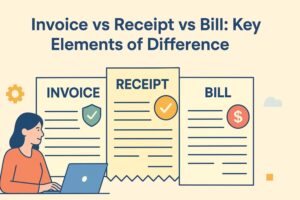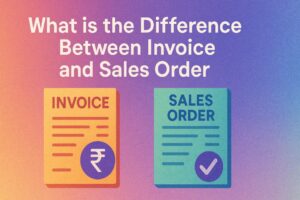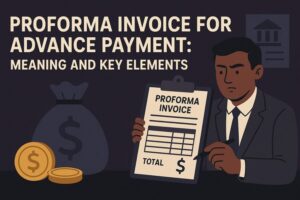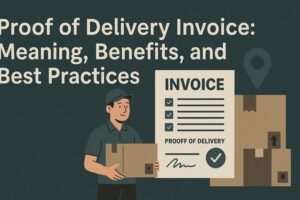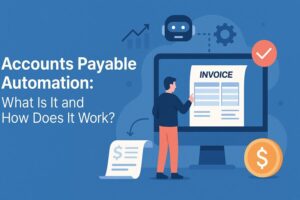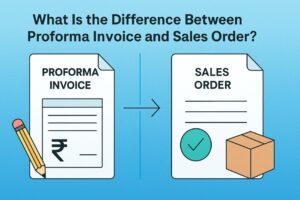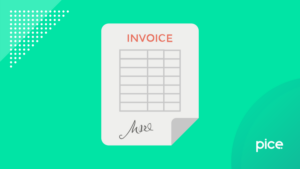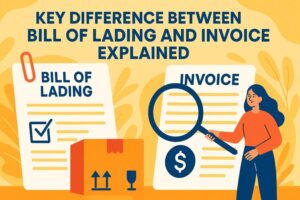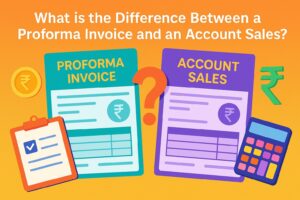What Is Vendor Invoice Management Process and its Benefits?
- 12 May 25
- 14 mins
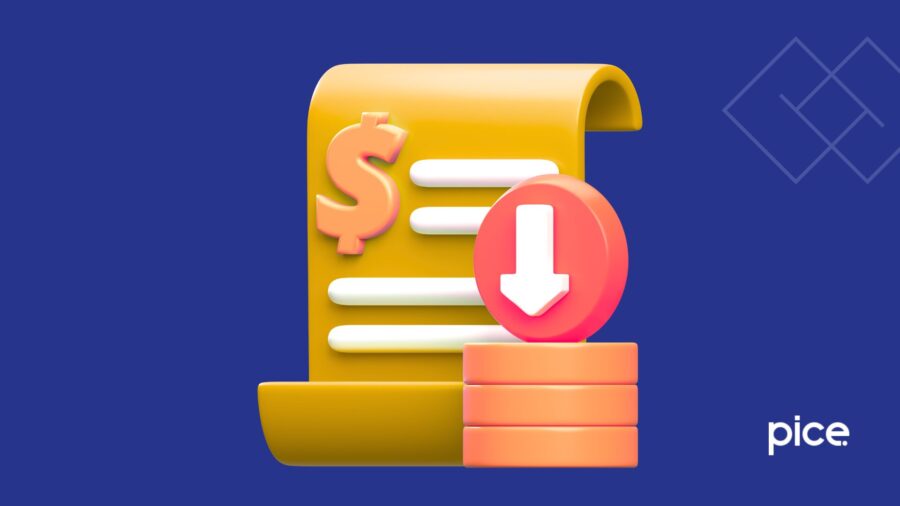
What Is Vendor Invoice Management Process and its Benefits?
- What Is Vendor Invoice Management?
- Why Is Vendor Invoice Management Crucial?
- What Is a Vendor Invoice?
- Step-by-step Process of Vendor Invoice Management
- What Is a Traditional Vendor Invoice Processing Workflow?
- How to Optimise Vendor Invoice Management Process?
- What Are the Challenges of Manual Vendor Invoice Processing?
- How Automation Can Help in Vendor Invoice Management?
- How Does Automated Vendor Invoice Processing Work?
- What Are the Benefits of Automated Vendor Invoice Management?
- Best Practices for Enhancing Automated Vendor Invoice Management
- Conclusion
Key Takeaways
- Vendor Invoice Management (VIM) automates the payables process, reducing manual errors and improving operational efficiency.
- Strong VIM practices enhance vendor relationships by ensuring timely and accurate payments.
- Automation in invoice processing accelerates workflows, lowers costs, and improves financial visibility.
- Clear guidelines, standardised formats, and centralised platforms are vital for seamless invoice management.
- Embracing e-invoicing and AI-driven tools future-proofs your business against compliance and scalability challenges.
The growth of technology is digitally evolving today’s dynamic business landscape. Consequently, managing expenses and vendor relationships has become more crucial than ever. This helps in maintaining efficient operations and economic stability. Vendor invoice management (VIM) is a strategic approach to optimise relationships with vendors who supply goods and services to your business.
Whether you are a small-business owner, aiming to streamline operations or head of a large enterprise willing to improve compliance and accuracy across the board, VIM is the cornerstone for all. Not only does it automate the payables, but it also leaves no room for manual errors.
Handle all your sales and purchase invoices in one place.
Pice’s all-in-one invoice management tool helps you track, send, and organize invoices from a single dashboard. Automatically share new invoices with customers, send timely payment reminders, and keep your collections under control—effortlessly.
Want early access? Fill out this form to get request a demo!
Subsequently, this comprehensive overview talks about vendor invoice management along with its top challenges and best practices. Proper implementation of vendor invoice management improves efficiency and mitigates risks.
What Is Vendor Invoice Management?

Simply put, vendor invoice management is the integral process of a business to manage invoices. It is an important part of the Accounts Payable process. When managed well, it can mitigate inefficiencies, speed up the payment cycle and improve the cash flow in the organisation.
Why Is Vendor Invoice Management Crucial?
Managing vendor invoices can be complex, especially for growing businesses as they work with more suppliers. The entire process must work well to ensure vendors are paid correctly and timely.
In addition to this, there are other reasons that make vendor invoice management an important process to consider. Take a look:
- Accurate Accounts Payable Reporting: Automation of invoice processing reduces errors and improves financial records. It ensures your accounts payable reports are accurate and flawless.
- Better Vendor Relationships: Paying vendors consistently and on time goes beyond just payments. It builds trust and strengthens partnerships between suppliers and businesses. Valuing their services encourages collaboration and respect.
- Improved Cash Flow Visibility: Such control over payments gives you clear insights into your cash flow. You can efficiently manage your upcoming expenses and identify investment opportunities, resulting in informed financial decisions.
What Is a Vendor Invoice?
A vendor invoice is a formal payment request issued by the supplier to the buyer. It requests payments for all the goods or services provided. Once the goods or services are delivered, the vendor issues this invoice. It serves as an important step in the procurement process.
The invoice shows the consolidated amount and outlines the payment terms. Payment can be made in full or in instalments, depending on the agreement.
Critical Elements of a Vendor Invoice

Vendor invoices across organisations may look different, but they must include certain elements to be official. Here's a detail:
- Date of Invoice: This is when the invoice is issued. It sets the due date and starts the payment timeline.
- Unique Invoice Identifier: Each vendor invoice need to have a unique identifier. It could be a number or an alphanumeric code. It helps keep a clear audit trail and simplifies record-keeping.
- Parties’ Contact Details: The invoice must have full contact information for both the vendor and the buyer. This includes names, contact details, addresses and relevant websites.
- List of Goods or Services: The invoice must contain a list mentioning each product or service, along with quantities and costs. The totals should be summed at the bottom of the invoice to show the amount due.
- Payment Conditions: Clear pre-configured rules are important for timely payments. The terms must align with the agreement between buyers and suppliers. Common payment terms include:
- Immediate Payment: When the payment is due at the time of receiving the invoice.
- Advance Payment: This is when advance invoices are provided. The buyer must pay before receiving the supply.
- Month-End Payment: One of the common invoice terms is month-end payment. It is when the payment is due at the end of the month, as stated on the invoice.
- 50% Deposit: The supplier requests half of the total amount before beginning the process.
- Mid-Month Payment: Payment is due by the 15th of the month after the invoice date.
- Total Due Amount: The invoice should clearly mention the total amount due, covering taxes, fees and any payment discounts. It may also include additional charges like sales tax or service fees, as previously agreed.
In addition to the basics, vendor invoices also include:
- Accepted payment methods
- References to purchase orders
- Extra tracking numbers for financial records
- Any other relevant details about the customer’s order
Step-by-step Process of Vendor Invoice Management
A successful vendor invoice management process follows these general steps:
- Step 1: Receive invoices from vendors via email, post or a vendor portal.
- Step 2: Manual entry of details can take hours. Use OCR (Optical Character Recognition) and AI-based tools to enter and extract details.
- Step 3: Invoices are checked through the invoice verification process for errors and duplicate payments.
- Step 4: Invoices are matched against purchase orders and goods receipt notes.
- Step 5: Then, these are routed through pre-defined workflows for department or manager approvals.
- Step 6: Once approved, invoices are queued for payment based on payment terms and cash flow status.
- Step 7: Invoices and payment records are stored for compliance, audits and future reference.
What Is a Traditional Vendor Invoice Processing Workflow?
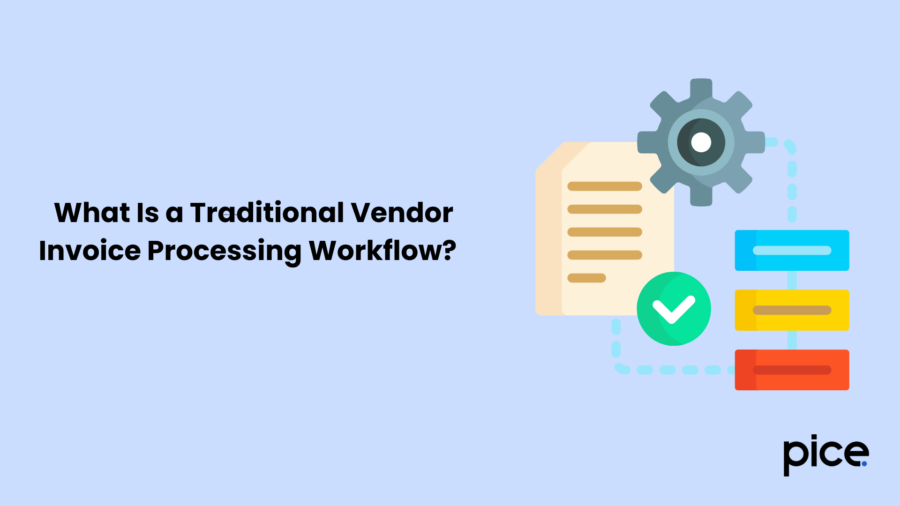
The manual processes of the vendor invoice management cycles include several key steps:
- Step 1: The accounts payable team receives the vendor invoice by mail or electronically.
- Step 2: The team records the invoice details and matches them with related documents, like purchase orders and delivery receipts, to ensure accuracy. There is also a duplicate invoice detection process to find repetitive financial transactions.
- Step 3: Then, the invoices go through an approval chain and need sign-off from the relevant departments.
- Step 4: Once approved, the team submits the invoice for payment processing.
- Step 5: After payment, the team records the invoice data in the general ledger and archives it for future reference.
While the process is straightforward, it might take a long time to complete. The completion depends on the invoice volume, business processes, common payment conditions, cash forecasting capabilities and more.
How to Optimise Vendor Invoice Management Process?
Managing vendor invoices is important for a fruitful vendor-buyer relationship and the elimination of common errors. Here are some ways to optimise your vendor invoice management system:
- Create a Vendor Billing Protocol:
Developing a clear vendor billing protocol, whether they are country-specific e-invoicing regulations or general guidelines, is the initial step in improving your vendor invoice management. As a purchaser, it is important to convey your accounts payable automation process to vendors and negotiate terms as needed.
- Assess the Necessity for Purchase Orders:
A purchase order (PO) for every transaction clarifies the process better. The document must include comprehensive descriptions of the project, along with the quantity or unit price of the items, terms of payment and information regarding delivery. This documentation ensures clarity and consistency in your dealings.
- Standardise Your Invoicing Approach:
Select a consistent invoicing method, whether digital or paper, and adhere to it. Maintaining consistency in invoicing methods using an intuitive interface makes processing easier and minimises confusion for both parties.
- Outline Required Invoice Information:
Every supplier follows a unique invoice format. If you need certain information on the payable invoice, ensure to mention the same to the supplier. For instance, if you are ordering T-shirts, specify if you need information on colours, sizes, weights and materials. Having these specifics upfront is vital for smooth invoice approval and auditing.
- Define Payment Conditions:
Ensure to indicate payment terms on invoices including discounts for early payment, late payments and deadlines for invoice submission. This clarity helps prevent misunderstandings and guarantees timely payments.
What Are the Challenges of Manual Vendor Invoice Processing?
Take a look at certain challenges in vendor invoice processing:
- Impact of Delayed Invoice Processing on Credibility:
For mid to large manufacturers, dealing with incoming invoices from various suppliers is complicated. Mistakes and delays in payments can hurt vendor relationships. This can result in shorter payment terms and lower-quality supplies, which can damage the company’s reputation.
- Complexity in Data Capture:
Processing thousands of invoices with different details is tough, especially when documents are incomplete or hard to read. Managing a large stream of data manually can lead to various errors. Automation makes the process error-free, bringing down the time needed to capture the data.
- Missing or Duplicate Invoices Impact Cash Flow:
Irregular invoicing, whether it is missing or duplicate, can severely damage the consistency of a cash flow. Duplicate invoices can cause overpayments, leading to further cash flow problems and issues with suppliers.
- High Costs of Manual Invoice Processing:
Processing invoices by hand can be expensive. Making invoice processing automated is not only cost-efficient but also speeds up the process.
How Automation Can Help in Vendor Invoice Management?

Automatic vendor invoice management simplifies the accounts payable process. This lets businesses run more smoothly. Automation has several benefits:
- Rapid Invoice Processing: Automated systems handle invoices more quickly than traditional manual methods. This helps save time on every invoice and allows the accounts payable team to focus on more important tasks.
- Automated Data Entry: Machine learning tools collect and input invoice information into the system automatically, eliminating the need for manual effort.
- Fewer Errors and Missing Invoices: Automation lowers the chances of losing invoices or entering data incorrectly, making the payment process easier.
- Better Supplier Relationships: Timely payments from automation help keep positive relationships with suppliers, which is crucial for a dependable supply chain.
How Does Automated Vendor Invoice Processing Work?
Instead of starting with manual processing like traditional methods, automated invoice processing begins much earlier. When you receive an invoice, the system automatically matches, checks and approves it for payment without needing human help.
Here’s how automated vendor invoice processing generally works:
- Digital Invoice Capture: When you get a digital invoice, the system scans it to convert it into a text-searchable document, no matter what format it is (PDF, image, etc).
- Data Extraction and Mapping: The automation software extracts key details from the invoice. Subsequently, the data is subsequently sent into your company’s ERP system.
- Automated Workflow Routing: The system automatically sends the invoice to the right people or departments for review and approval, removing the need for manual handovers.
- Payment Processing: The payment then gets processed, allowing the accounts payable team to match up the transaction.
What Are the Benefits of Automated Vendor Invoice Management?
Using automated systems for vendor invoice management can greatly improve your business. Here are some key benefits:
- Faster Invoice Processing: Managing invoices manually is very time-consuming, particularly when dealing with a large number of invoices. This reduces labour expenses and prevents delays.
- Improved Operational Efficiency: With automated software, you can easily upload invoices, establish approval workflows and ensure timely payments. This minimises the time invested in manual data entry, invoice matching and obtaining approvals.
- Lower Risk of Human Error: Automation lessens the requirement for manual data entry, which aids in avoiding typical errors such as paying invoices multiple times or entering incorrect amounts. This results in more precise financial records and improved cash flow management, facilitating wiser budgeting and purchasing choices.
Best Practices for Enhancing Automated Vendor Invoice Management
To maximise the benefits of automated vendor invoice management, follow these best practices:
- Implement Automated Systems
Automate invoicing to reduce errors and speed up transactions. You can use software to gather and organise invoice data and implement tools for routing and approvals. To validate the data, businesses can employ algorithms to check invoice accuracy and set alerts for invoice status updates.
- Embrace Electronic Invoicing
Electronic invoicing (e-invoicing) increases efficiency and lowers costs. You can incorporate secure platforms for efficient invoice handling and verify invoices with digital signatures. You can also store invoices in a cloud-based invoice management solution for easy access.
- Establish Clear Submission Guidelines
Clear guidelines ensure the smooth and quick processing of invoices. Businesses must provide clear submission instructions for vendors. They can also specify how vendors should submit invoices and set deadlines for timely submissions.
- Centralise Invoice Management
Centralisation improves oversight and control by managing all invoicing tasks on one platform. It also protects sensitive data with access controls. Centralisation consolidates reporting to monitor performance.
- Designate a Point of Contact
Assign a person to handle invoice questions for easier communication. He/she will manage all invoice inquiries through one contact. By providing awareness training, you can ensure that every vendor knows the contact person. This also allows for outlining steps for the quick resolution of complex issues.
- Offer Online Submission Portals
Online portals help vendors submit invoices and track statuses easily. Create simple portals that allow easy uploading of invoices for submission. Not only does it help to track invoices in real time, but it also implements checks for compliance.
- Foster Open Communication with Vendors
Good communication is key to a smooth invoice process. Provide regular updates about invoice statuses to vendors. Ensure vendors have accurate contact details. Listen to their feedback for better optimisation. You can also offer training to reduce errors and improve compliance.
Conclusion
Vendor invoice management is no longer a complicated manual task. With the right set of strategies and tools, this automated process can improve your company’s relationship with the supplier. Whether you are starting with a simple automation or going end-to-end digital, incorporating state-of-the-art VIM practices will surely be one of the smartest moves to grow and flourish.
💡If you want to streamline your invoices and make payments via credit or debit card or UPI, consider using the PICE App. Explore the PICE App today and take your business to new heights.
 By
By 





